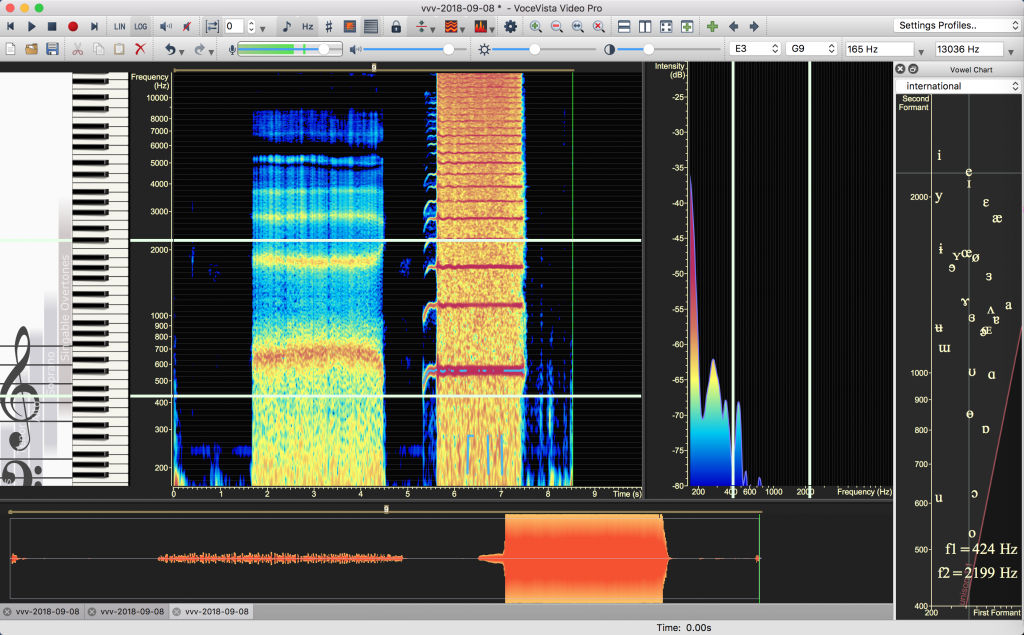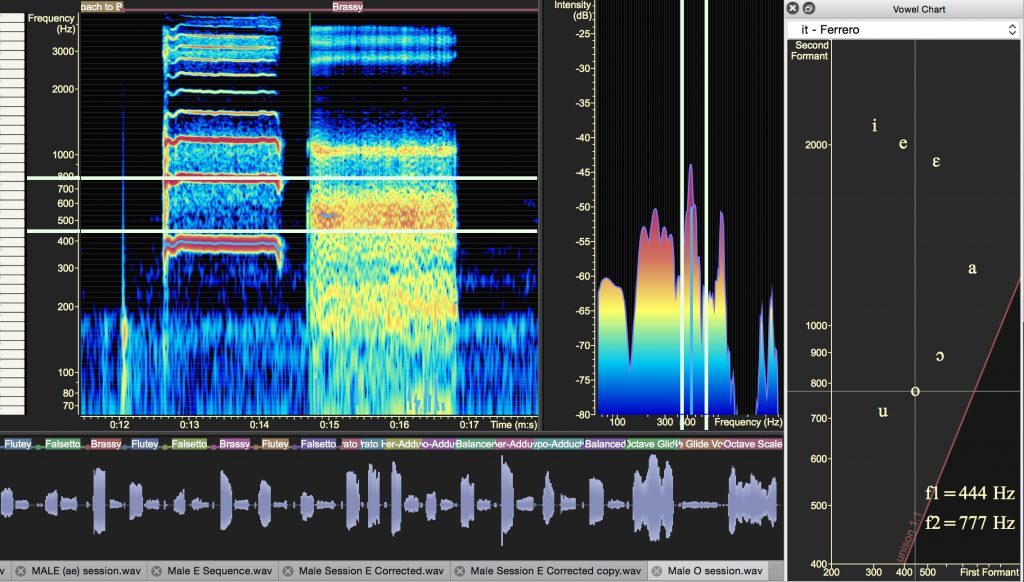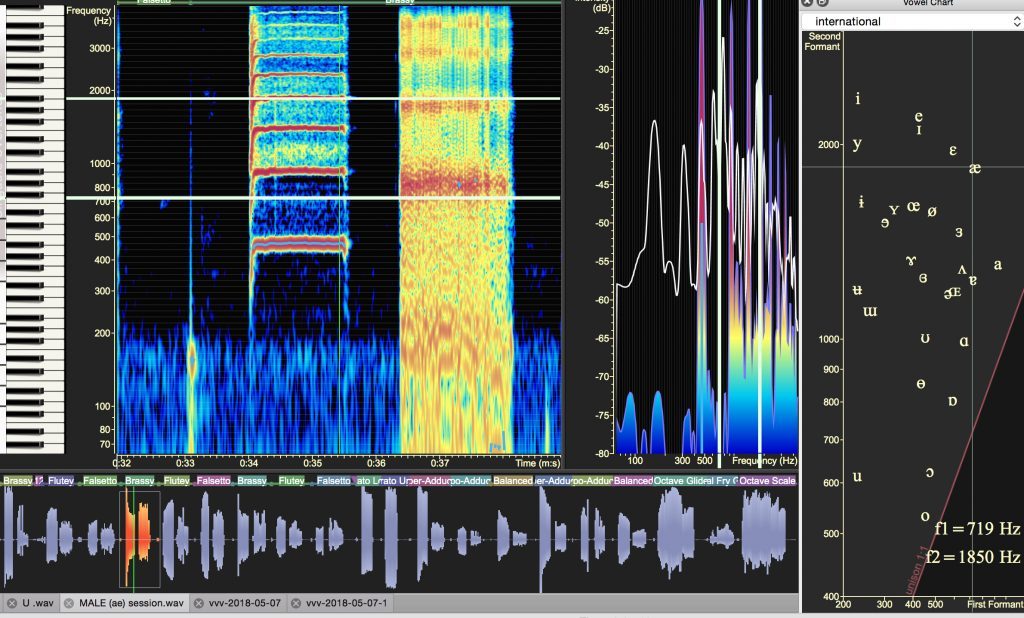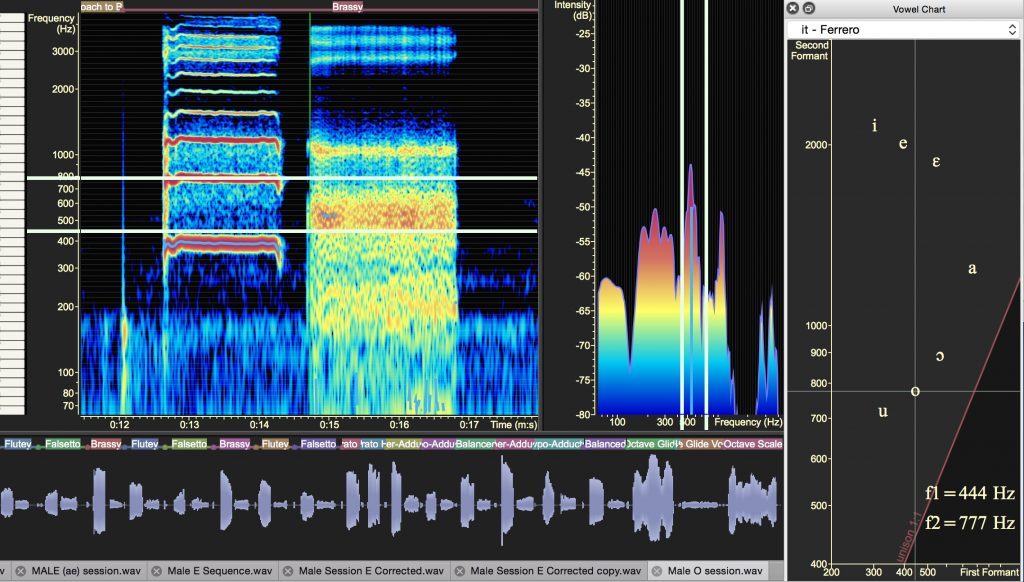How to Sing Better with Mix Voice

MIX AND THE CONTEMPORARY SINGER
To sing contemporary music, which requires consistent tone quality throughout an extended range, the singer must develop the mix. The lower and upper registers must be equal in power, presence, and tone quality, with a smooth transition through the primo passaggio.
The concept of the mix, mixed voice, or mixed registration has evolved along with the development of popular singing styles that require a singer to produce vocal sounds that are natural, powerful, consistent, and similar in tone quality throughout an extended range of two to three octaves or more.
Today’s popular singers need to extend the powerful timbre of the lower register chest voice into the upper register rather than flipping into a soft, breathy, falsetto on higher notes.
Mix, for the contemporary singer, is a reinforced upper register with firm glottal closure, additional bracing by the TA muscles, higher closed quotient, second formant dominance, increased energy in the third and higher harmonics, and twang- acoustic energy in formants 3-5 occurring as a result of a narrowing of the epilarynx.
For males, mix can also be a less TA- activated lower register (M1) in the area of roughly D4-Ab4.
These elements together create the illusion that the singer is carrying the lower register upward.
In some ways, we could say that all singers are mixing all the time. Every note is a mixture of laryngeal or muscle activity, and resonance or formant activity. Singing always involves coordination and interaction of the muscles that shorten the folds (TA) and the muscles that lengthen the folds (CT). Every vowel we sing is a combination of formants- F1 and F2.
The term mix, in contemporary singing, refers to specific tone quality and timbre in the upper register that matches the robust and bright quality of the speaking voice and the pop lower register singing voice. The mix has the power and edge of an extended chest voice but without the strain and vocal damage of "pulling chest".
Mix is the powerful, ringing sound that gives the impression we are carrying the chest voice (TA dominant phonation) upward.
Mix also implies a smooth and imperceptible transition through the primo passaggio or first bridge.
Mix sounds strong but feels easy.
When a singer is mixing, the vocal tone is speech-like and natural.
The mix can be edgy, powerful, and ringing (brassy mix) or it can be less robust in quality (fluty mix).
Singers in every contemporary genre must develop a strong mixed upper register with imperceptible transitions through the bridges. In rock & roll, musical theatre, pop, country, and every other genre the high notes are known as the money notes.
The ability to connect the registers and sing powerfully into the upper register is almost a prerequisite for success in contemporary music.
The contemporary mix requires:
- A narrowing of the epilarynx via the aryepiglottic sphincter muscle to create twang- the ringing, edgy, brassy quality needed in contemporary singing.
- Speech-like vocal quality.
- Firm glottal closure (not breathy).
- Coordination of TA and CT muscles.
- A second formant resonance strategy that provides power and projection without excessive breath pressure.
MIX DEFINITIONS IN THE LITERATURE
Mix has many definitions in the literature that include both laryngeal and acoustic elements. Here are just a few:
A study into vocal registers as early as 2004 by Castellengo, Chuberre and Henrich evaluated the concept of voix mixte and showed that singers produced this apparently mixed voice in either M1 or M2, using resonance and intensity changes to simulate the sound quality of another mechanism (M2 when in M1, M1 when in M2).
Janice L. Chapman Singing and Teaching Singing, Third Edition. Plural Publishing, 2017.
Coordinating the mix can be difficult. If the head voice and chest voice are not equally balanced in strength and coordination, you don’t have a whole lot to mix together. The mix can be further divided into chest-mix and head-mix. chest-mix combines head and chest tonal qualities, with chest quality being dominant.
The vocal folds close firmly and the tone quality has significant buzz and power. This is the registration used in mix belting. Head-mix also combines head and chest qualities, with the head quality being dominant.
The vocal folds are vibrating almost along the uppermost edge, but there is still some tension thanks to the involvement of the TA.
Matthew Edwards. So You Want To Sing Rock ‘N’ Roll. Rowman & Littlefield, 2014. (pg 106).
When the thyroarytenoid muscle is used for adduction, the bottom of the vocal folds can be positioned differently from the top. This occurs by contraction or release of the thyroarytenoid (TA) muscle, which pushes the bottom of the vocal fold medially when it stiffens.
The word "register" is sometimes used to describe three states of this upper-lower variation in adduction. In the so-called falsetto register, the lower part of the vocal fold is not adducted much because the TA muscle is either poorly developed (as in pre-pubertal children) or not activated.
The female adult registration is often an intermediate (or mixed) setting….. The bottom of the vocal fold is slightly more adduced than in falsetto. We refer to this intermediate setting as mixed register.
When TA contraction is strong, the bottom of the vocal fold is highly adducted….. This registration is often characteristic of male speech.
Ingo R. Titze and Katherine Verdolini Abbott, Vocology: The Science and Practice of Voice Habilitation (Iowa City: National Center for Voice and Speech, 2012)
THE THIRD REGISTER
Some pedagogues refer to a theoretical third register known as the middle voice. While there is no separate vocal fold vibration pattern called middle voice, there is a middle section of the voice where muscular activity and resonance activity combine to create the specific timbre used in contemporary singing known as the mix.
In the area beginning at the primo passaggio and extending upward to at least the second bridge, CT lengthened vocal folds braced with some TA muscle activity, second formant resonance strategies boosting the third, fourth, and higher harmonics, and twang (increased energy in formants 3-5) produced by a narrowing of the epilarynx, contribute to the unique quality of the so-called third register.
Bracing by the TA muscles produces a robust sound that resembles the lower register. The more the TA muscles are activated, the stronger this area will be.
Since the range of notes from the first to the second bridge is in the middle of the female vocal range, the term middle voice became popular with voice teachers.
LARYNGEAL MIX and ACOUSTIC MIX
Laryngeal mix refers to events occurring in the vocal folds. The TA (thyroarytenoid) muscles shorten and thicken the vocal folds. When this occurs, more of the vocal fold is active in vibration. When we sing lower notes, the folds vibrate more slowly.
The CT (cricothyroid) muscles connect the thyroid and cricoid cartilages. When the CT muscles contract, the thyroid cartilage rocks forward, lengthening and stretching the vocal folds attached at the back of the larynx to the arytenoid cartilages.
When the folds stretch, they produce higher pitches.
These two muscle groups are antagonistic- they are always working against one another. As one group becomes more active, the other group must become less active.
A sound has more harmonics and stronger harmonics when more of the muscle mass of the vocal folds (thickening muscle, or TA) is in contact, creating higher closed quotient. That sound can be described as chesty.
The sound has fewer harmonics overall when less muscle mass is activated with lower resulting closed quotient. That sound can be described as heady.
The terms mode 1 and mode 2 can be used in place of lower register and upper register. These terms specifically refer to TA-dominant (short and thick folds) vs. CT-dominant (long and thin folds) phonation. CT-dominant eventually becomes ligament-dominant; as the folds lengthen, the ligament bears more of the weight of phonation.
TA muscle activation during vocal fold vibration impacts the energy in the harmonics produced; greater TA activation results in all harmonics having more energy. Less TA activation results in all harmonics having less energy.
The vocal folds are constantly adjusting, with varying degrees of TA and CT interaction. There are three basic configurations of this muscle mass interaction:
- TA-dominant: the vocal folds squared in shape and meet at the bottom of the fold during the vibrational cycle (lower register or mode 1); greater vocal fold mass in contact during the vibrational cycle.
- CT and ligament-dominant: the vocal folds meet higher on the depth of the fold (upper register or mode 2); less vocal fold mass in contact during the vibrational cycle.
- A balance of CT and TA muscle activity.
The TA (shortening and thickening) and CT (lengthening and stretching) muscles must coordinate together. In the laryngeal mix, these two muscle groups are constantly interacting.
The balance of TA and CT activation produce various permutations of mix. When the transition from TA muscle dominant to CT/ligament-dominant is imperceptible, the break is eliminated,
When the transition is abrupt, a flip or break occurs as destabilization produces decreased coordination between the two muscle groups and abduction of the folds.
Laryngeal Mix
- In the upper register, mix is a reinforced upper register or CT dominant phonation, braced by TA muscle activity.
- In the lower register, mix could also be achieved by a decrease in TA muscle activity.
Blending or mixing registers requires a decrease in lower register thyroarytenoid muscle activity and a gradual increase in cricothyroid muscle activity as pitch rises.
Since there is some TA activity occurring on all but the highest notes in the range, and there is some CT activity occurring in all but the lowest notes of the range the largest portion of the voice is essentially some kind of mix of TA and CT activity.
Although they always work together, CT muscle activity starts to predominate above the primo passaggio; the TA muscles predominate below the primo passaggio. The challenge lies in training these muscles to coordinate so that each gives up just enough and not too much control when needed.
In an ascending scale, for example, the trick is to begin relaxing TA engagement a little lower in the scale, (around Ab4 for females and Eb4 for males), relaxing TA contraction more on each successive ascending pitch to allow the CT muscles to activate.
However, if the TA muscles relax too much, the singer will experience a flip, or voice break. When descending in pitch, the TA muscles must gradually begin to increase activity again, or the lower pitches will be anemic and breathy due to inefficient vocal fold adduction and low closed quotient.
Finding optimum vocal fold and resonance adjustments in the troublesome overlap octave is a matter of attention to vowel tuning so adjustments can take place more easily.
Acoustic Mix
Acoustic mix and laryngeal mix work hand-in-hand. Vowel choices affect laryngeal function. The acoustic mix is a second formant resonance strategy: In the upper register, F2 boosts the higher harmonics, H3, H4, and above.
When we tune vowels, we encourage the mix and ensure that F2 aligns with the upper harmonics. We tune vowels and thus formants by adjustments of the resonators of the vocal tract. The ability to consciously affect formant/ harmonic relationships through attention to vowels will enable the singer to transition through the primo passaggio seamlessly and will produce the contemporary mix.
Acoustic mix occurs when F1, the first formant, sits between two harmonics, creating a timbre somewhere between the called out HEY and whoop. When this acoustic even happens, vocal fold vibration also tends to become less TA dominant; acoustic and laryngeal events affect each other.
The acoustic mix also occurs when F2, the second formant couples with higher harmonics- H3, H4, etc.
F1 Between H1 and H2

Acoustic mix happens when F1 and F2 are close together and resonating a harmonic that is between them. A formant might also appear between two harmonics, thus boosting both harmonics, creating a harmonic mix.
Male Mix at G4
Another indication of an acoustic mix is the second formant boosting H3, H4 or higher. Front vowels that have a high F2 frequency will employ a second formant resonance strategy of F2/H4 or higher harmonics.
In the image below, F2 is coupled with and boosting H3, the third harmonic. You can also see some energy in formants 3-5, the twang region.
Male Mix at Bb4 [æ]
In this example, the second formant couples with the fourth harmonic.

Back vowels, having a lower F2, are likely to couple F2 with H3 above the primo passaggio.
Male [o] Vowel at G3
If you would like to learn more about your voice AND learn to sing from home for less than you probably spend for lattes every month, check out our amazing YOU can Sing Like a Star online subscription courses for singers and voice teachers.
You can learn to sing with a self-study method- IF it's the right method. The ONLY method that can take you from beginner to professional is the YOU can Sing Like a Star online subscription course with over 600 recorded exercises.
This is the best method available and the ONLY method that takes you all the way from beginner to professional singer- for far less than the cost of in-person voice lessons!
Check this amazing course out at YOU can Sing Like a Star online subscription course.
If you are a voice teacher who wants to up your game, check out the YOU can be a Successful Voice Teacher online subscription course
With over 600 recorded exercises, including Riffs and Runs- Style, you don't need to be a great pianist or vocal stylist to be a great teacher!



